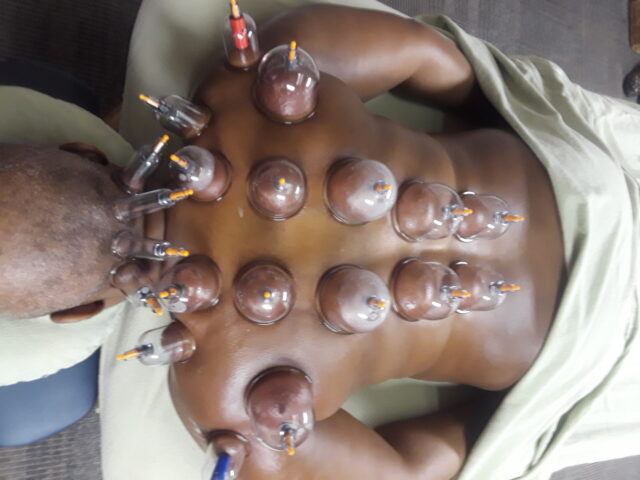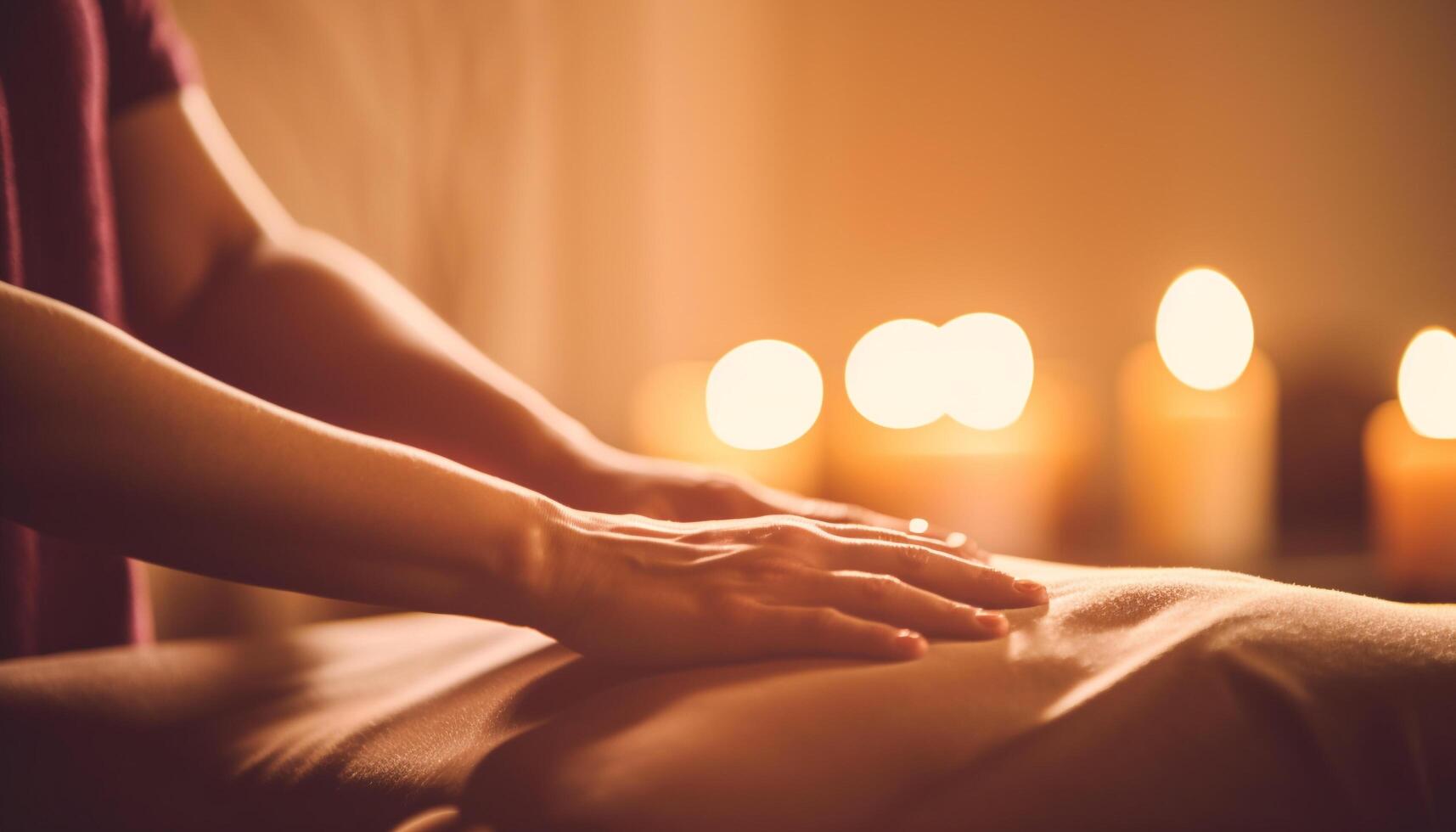Cupping therapy is an ancient healing practice that has been around for thousands of years.
Its primary purpose is to facilitate blood flow and promote healing. Today it is believed that cupping therapy comes with a wide range of benefits, although it’s mostly recognized as an alternative therapy for pain relief, especially in sports medicine.
Different types of cupping therapies apply for different situations—which is exactly what we’re going to talk about in this article. So, keep reading to learn more about four different cupping therapy techniques, how they work, and their benefits.
What Exactly Is Cupping Therapy?
Cupping is an ancient practice that involves creating localized suction on the skin by either a mechanical device or heat. The underlying skin is slightly raised into medical-grade silicone, glass, bamboo, or metal cups, enhancing the blood flow to the area. This causes the individual’s immune system to activate, working to flush the area of any stagnant fluids as it stretches out the body’s tissues and sends more blood to the area to stimulate the natural healing process.
Cupping is mostly considered to be rooted in Chinese medicine. However, some of the earliest records in the form of ancient papyrus medical texts (pictographs) suggest that it was the Egyptians who invented the practice in 1500 B.C. Of course, the practice also has connections with ancient Greece and the Islamic world.
The practice eventually spread to Europe during the Renaissance era, making its way into standard 18th-century medical practices to treat the common cold and chest infections.
The philosophy behind the ancient practice is to activate and strengthen the body’s natural self-healing powers. Throughout history, it was used to treat and “cure” all kinds of ailments, including pain, fever, menstrual imbalances, angina, vertigo, arthritis, gout, and much more.
Today, cupping has re-emerged as a popular form of holistic therapy primarily used to ease muscle aches and pains.
What Are the Benefits?
The primary benefit of cupping therapy is the increase in blood circulation to the affected area which helps relieve muscle tension and promote cell repair and lymphatic drainage. It can also aid in forming new connective tissues in the cupped area which leads to the creation of new blood vessels within the tissue.
Since the cups can be placed on major acupressure points, the practice is said to also be effective at treating issues that are more commonly associated with acupuncture. This would include digestive issues, skin issues, and so on.
A 2012 review of studies also found that cupping therapy may also help with the following conditions:
- Facial paralysis
- Shingles
- Dyspnea
- Disc herniation in the lumbar region
- Cervical spondylosis
More conclusive studies are needed to assess the therapy’s level of effectiveness in treating the above conditions, but essentially, cupping therapy is most beneficial for pain relief and muscle-related injuries such as inflammation, strains, and sprains.
Four Common Cupping Styles
Because cupping has varied origins, it also varies in the techniques used to perform the therapy. These techniques include the following:
Fire Cupping
Fire cupping is the most traditional form of cupping therapy. It involves the use of glass cups and flame (or heat) to create suction to increase the blood flow and break up fascial adhesions (scar tissue). This increases the blood flow quickly to create more space between the muscle, bone, and fascia. The old, stagnant body fluids in the area gets flushed out by the new blood to promote faster healing and recovery.
Ultimately, this type of cupping works to alleviate pain and muscle tightness as it promotes detoxification and improves your range of motion.
Using flame as a means to create the vacuum is a traditional practice. Static cupping, which I offer in my practice, is similar, and is discussed below. I do not offer fire cupping in my practice, for safety reasons, and especially because the fire department doesn’t permit any open flame in my premises!
Wet Cupping
Wet cupping is a variation of the therapy in which the skin is first punctured with a lancet to draw blood during the suction process. There is a variation of this technique that involves performing dry cupping first before administering the punctures and then the wet cupping.
While wet cupping offers many of the same benefits as fire cupping, it’s also been said to help the kidneys flush out heavy metals from the body.
Wet cupping is not a form that I offer in my practice. My massage therapy license does not permit any procedure that breaks the skin. If you seek wet cupping, be certain that the practitioner is licensed to perform the procedure, and be especially mindful that any break in the skin is an invitation to infection, so cleanliness and sanitation are essential.
Static Cupping
Static cupping usually involves the use of hard plastic cups and a vacuum pump. It’s known to be the “least aggressive” form of cupping as it involves one or more cups placed on the body and left alone. The placement of these cups is often on the trigger points, commonly referred to as “knots”. The fluid drawn into the area, and the body’s work to clear it, helps to relieve these points of muscular tension.
Because the cups remain in place for several minutes, the procedure typically leaves circular marks on the skin, where blood from the capillaries has been drawn to the surface. Unlike a bruise, these marks are not tender to the touch, and will fade in several days. The body’s own efforts to clear the fluid provides ongoing beneficial effects, even days after the massage is done.
Static cupping not only promotes detoxification and helps with pain and inflammation but also energizes the body and helps to improve the skin’s appearance. I offer static cupping in my practice, as an add-on to almost any massage.
Dynamic (Sliding, or Moving) Cupping
Dynamic cupping (also referred to as moving or sliding cupping) is the technique that’s most related to massage therapy. With dynamic cupping, a single soft silicone cup is placed on a particular area of the body while the individual receiving the treatment moves that part of their body.
There’s also a variation of this cupping technique called myofascial dragging, which involves the practitioner sliding (or dragging) the cup over a targeted muscle group to provide relief. Because the cup is constantly moving, there are no lasting marks after the massage, but possibly a slight redness to the skin, which fades immediately after the massage.
Dragging with a soft silicone cup is a great addition to your massages, and I offer this form as an add-on to most massages.
Which Style Is Best for Me?
There are several benefits to adding cupping therapy to your self-care regimen, whether you have an injury or just want to improve your overall health. My practice includes the more modern (and frankly, safer) forms of Static Cupping, and Dynamic Cupping, so they’re a great place to start.
If you’re thinking about trying out cupping therapy for the first time but aren’t sure where to start, reach out to us with any questions or concerns, or to book an appointment!






